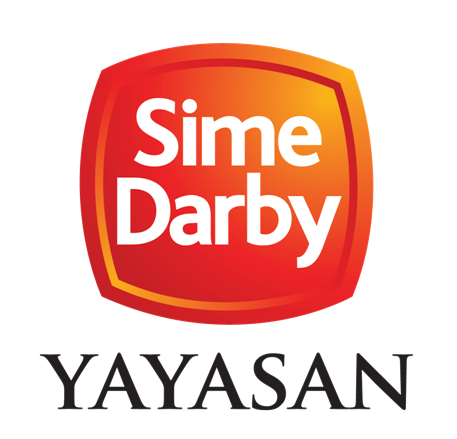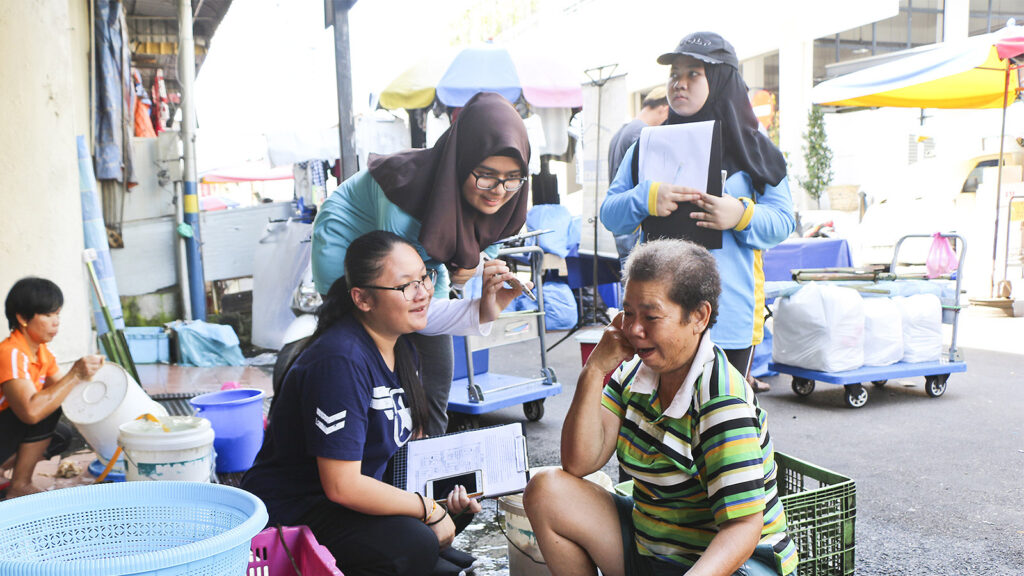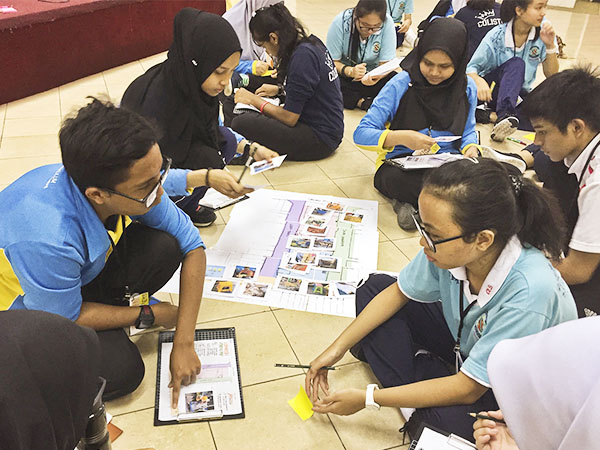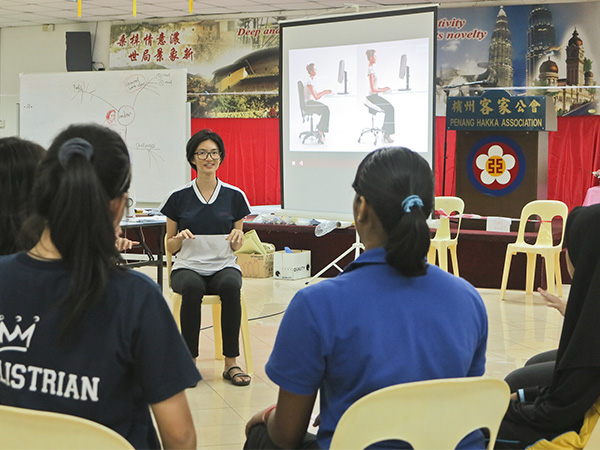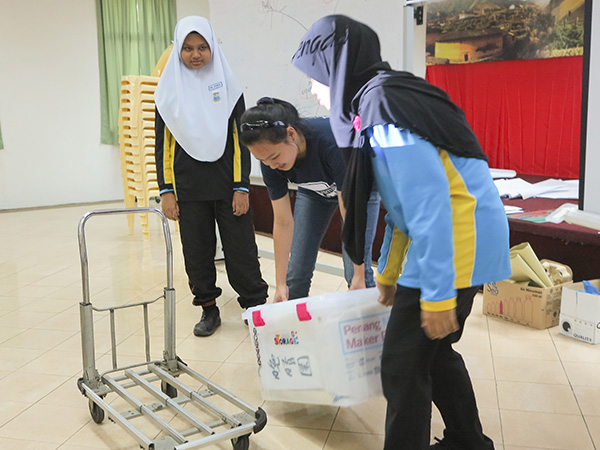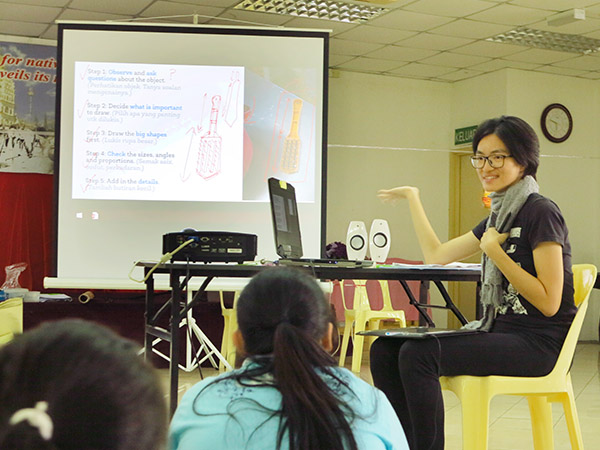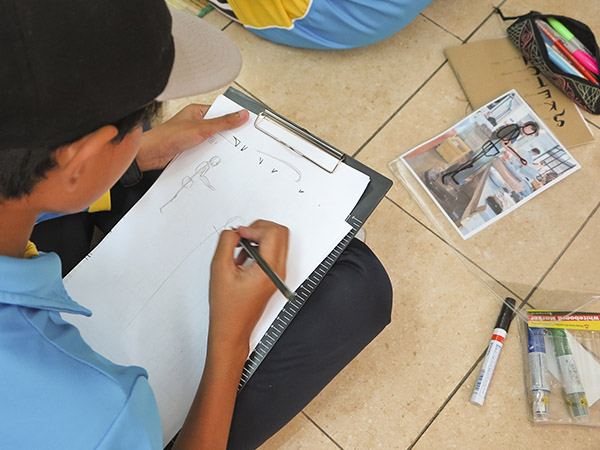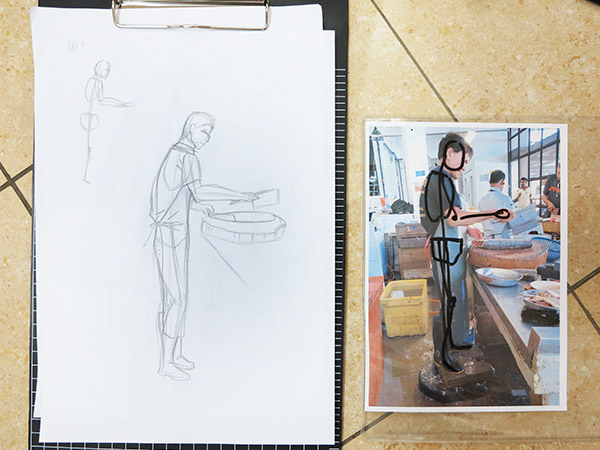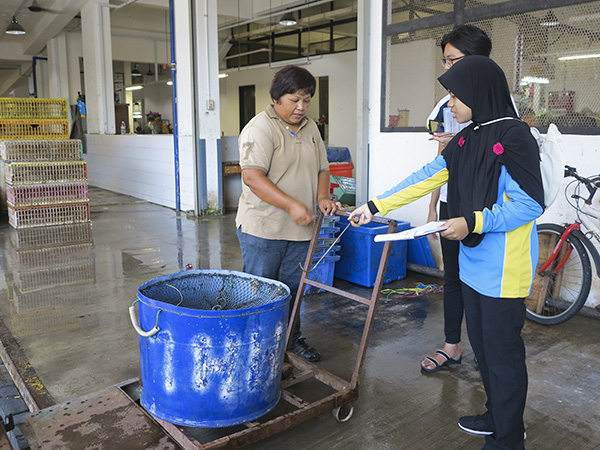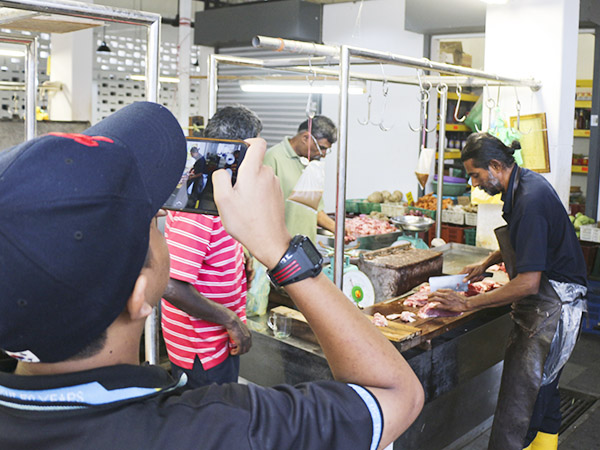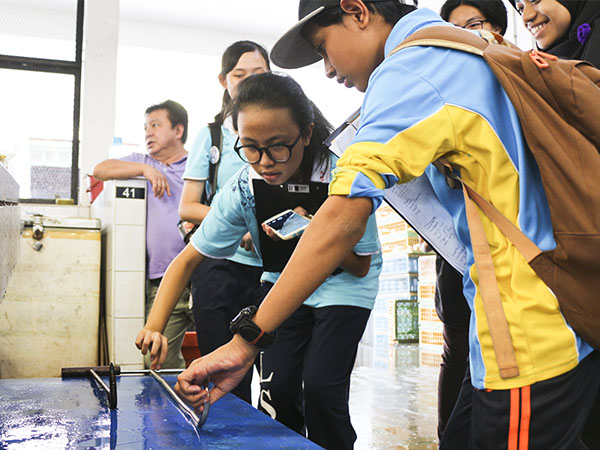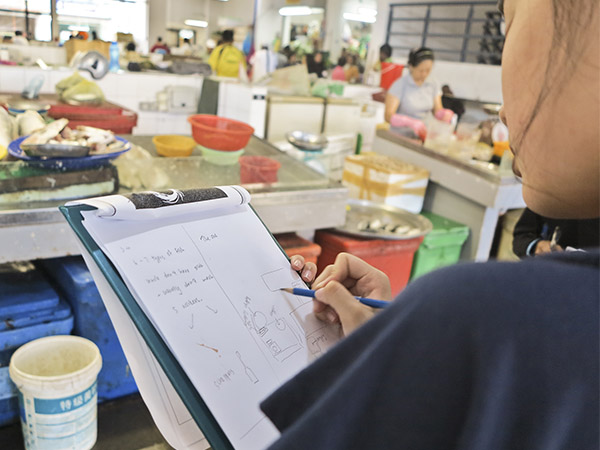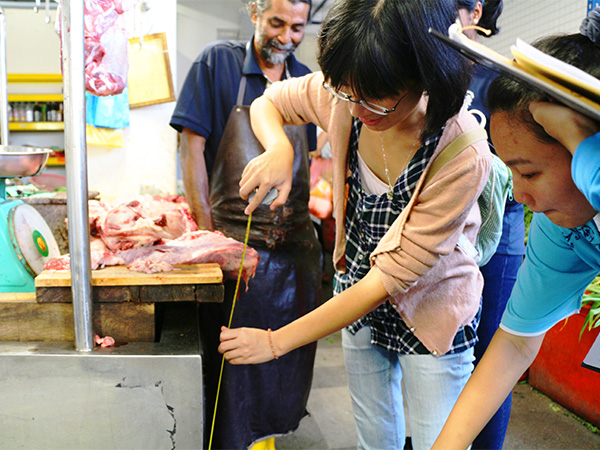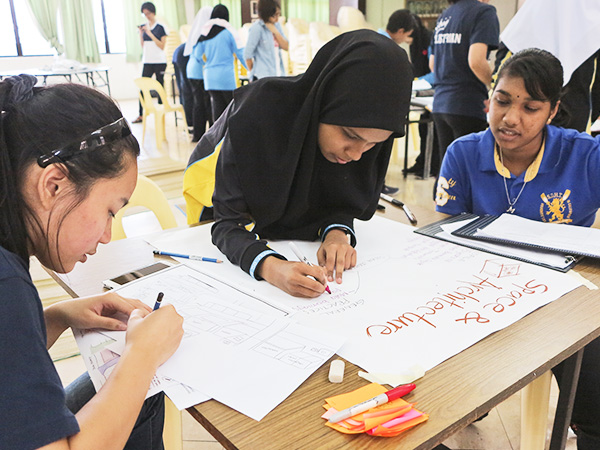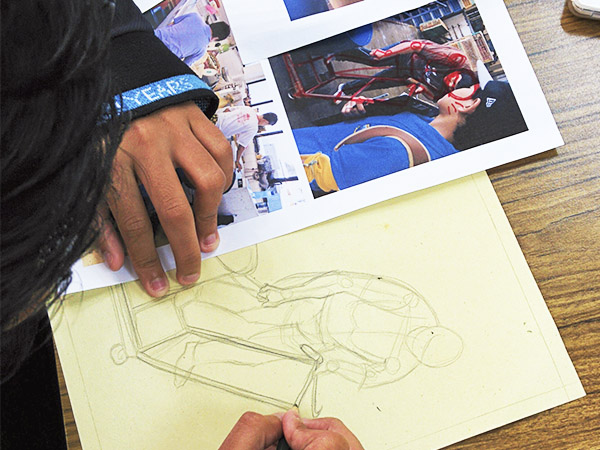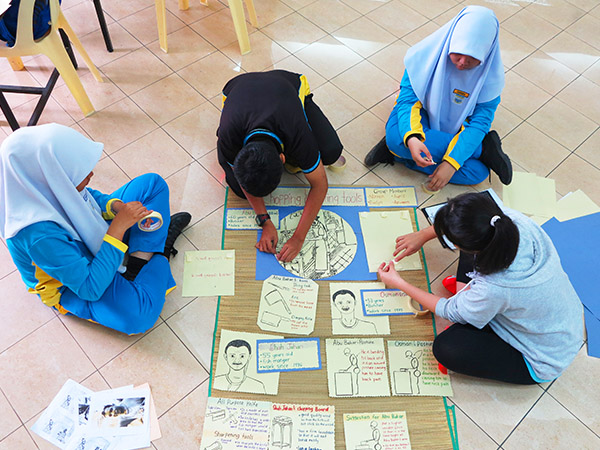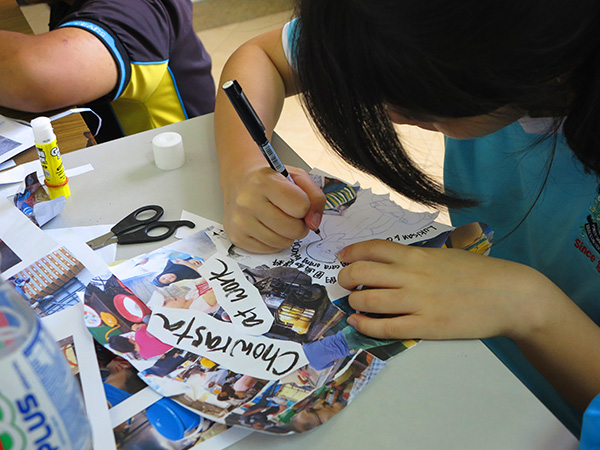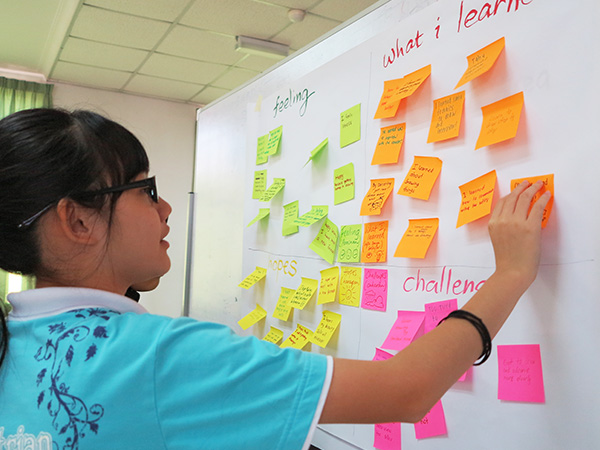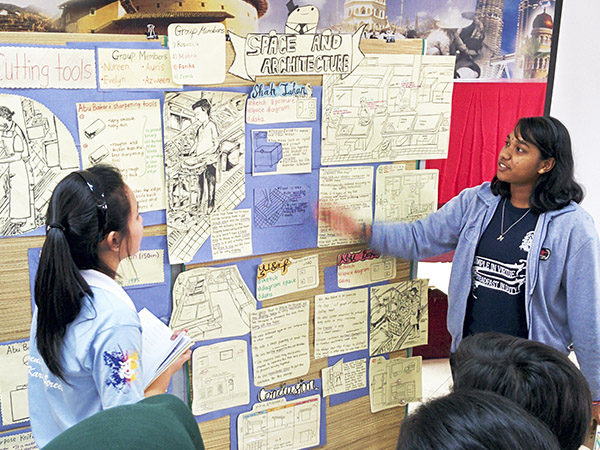Ergonomics at the Market
How do vendors work and how could they work better? Participants explore ergonomics in the market vendors’ daily work space using ink illustration and drawing.
Project at a Glance
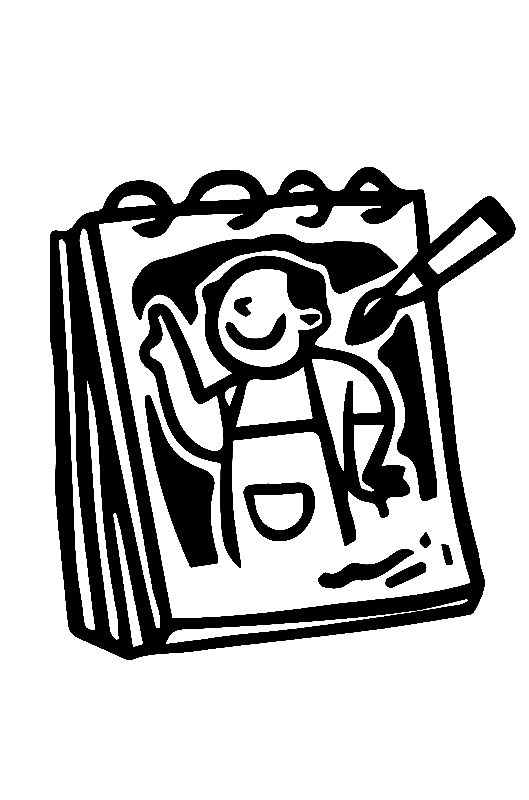
Driving Questions
How do vendors use their skills, knowledge, practices, and habits to customise their daily work space? Why is it important for their well-being and health?
Creative Medium
Ink Illustration and drawing
Community
Vendors at Chowrasta Market
Participants
15–17 year olds who have basic experience drawing from life (people, objects, buildings)
Human Resources
Visual artist
Timeframe
40 hours
Relevant Subjects
Social Sciences, Art and Design, Life Skills Education
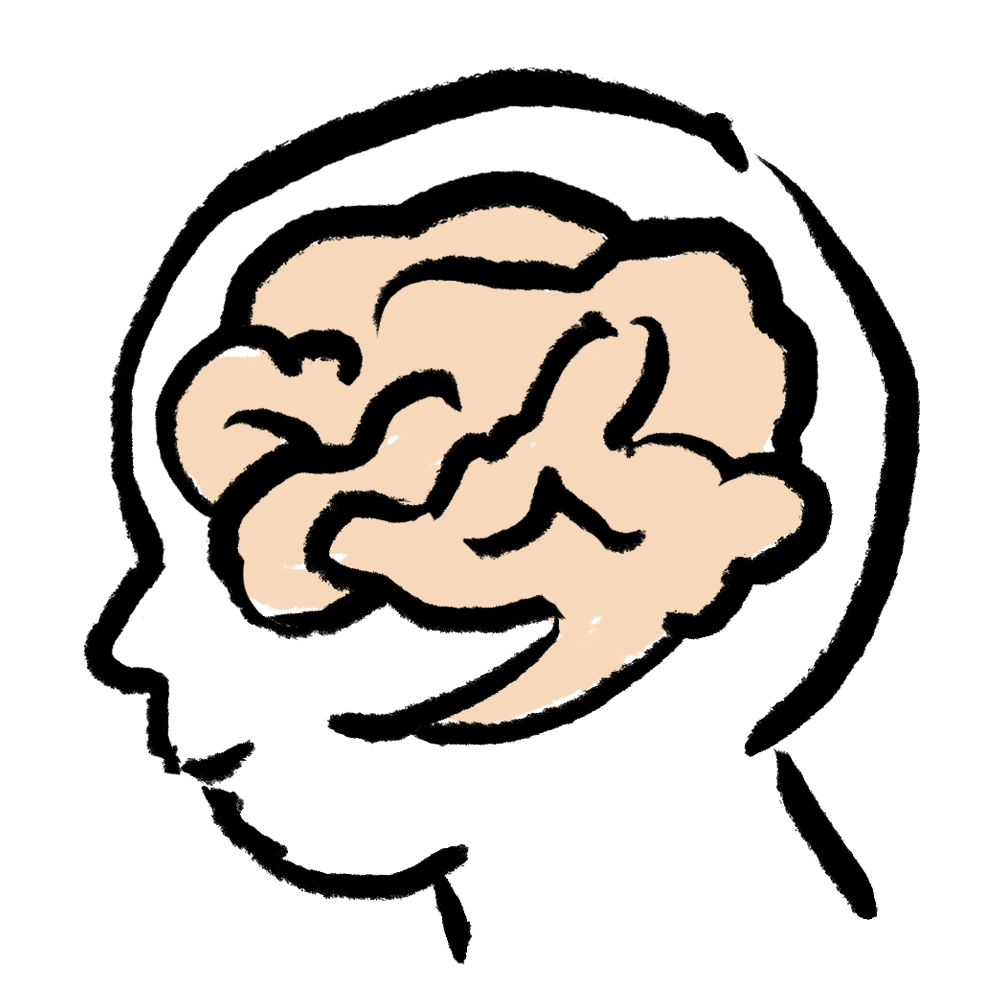
Knowledge
- Identify ways vendors customise spaces and tools or utilise work habits to improve their daily work.
- Compare and contrast different vendors’ approaches within their group focus area.
- Learn about ergonomics as choices that affect how we work safely, comfortably, and efficiently using our bodies.
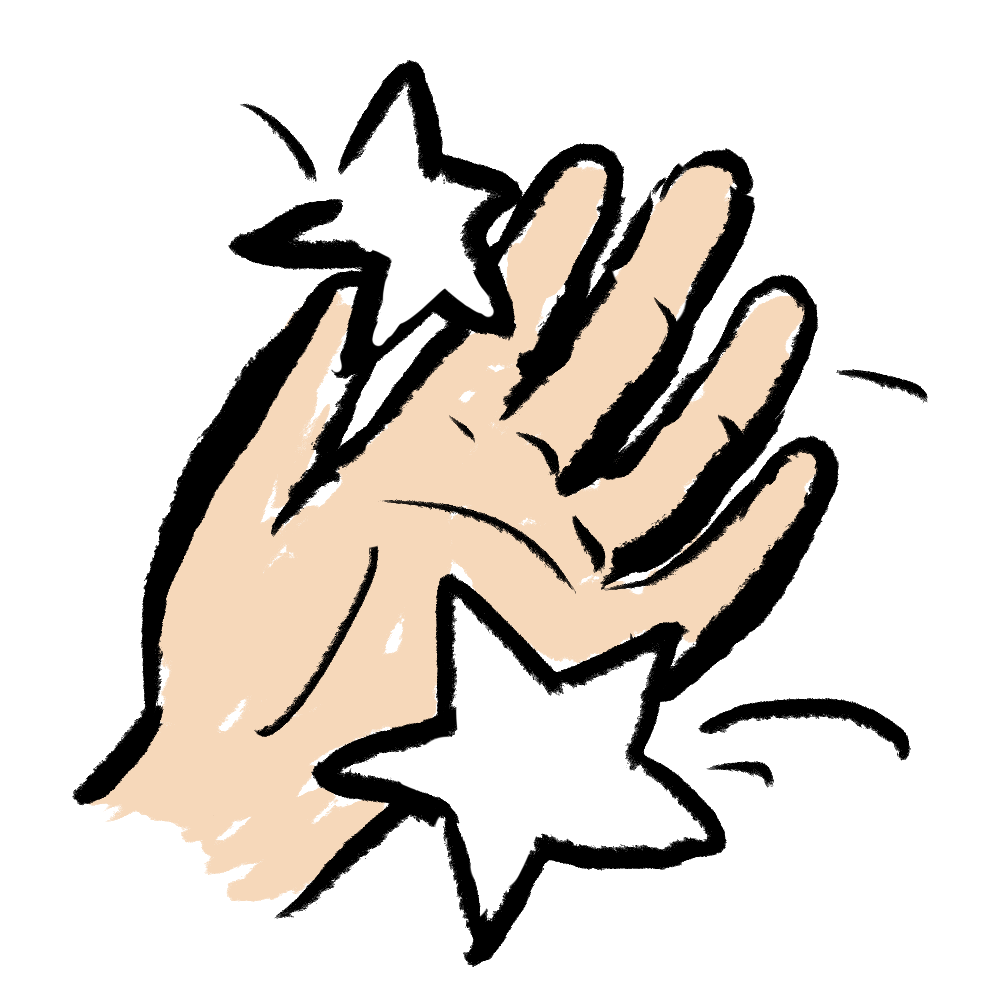
Skill
- Produce figure drawings using the Loomis stick figure frame with satisfactory proportions.
- Draw from on-site observations and reference images.
- Compose layouts of their final pieces.
- Interview and interact with the market vendors in an insightful and empathetic way.
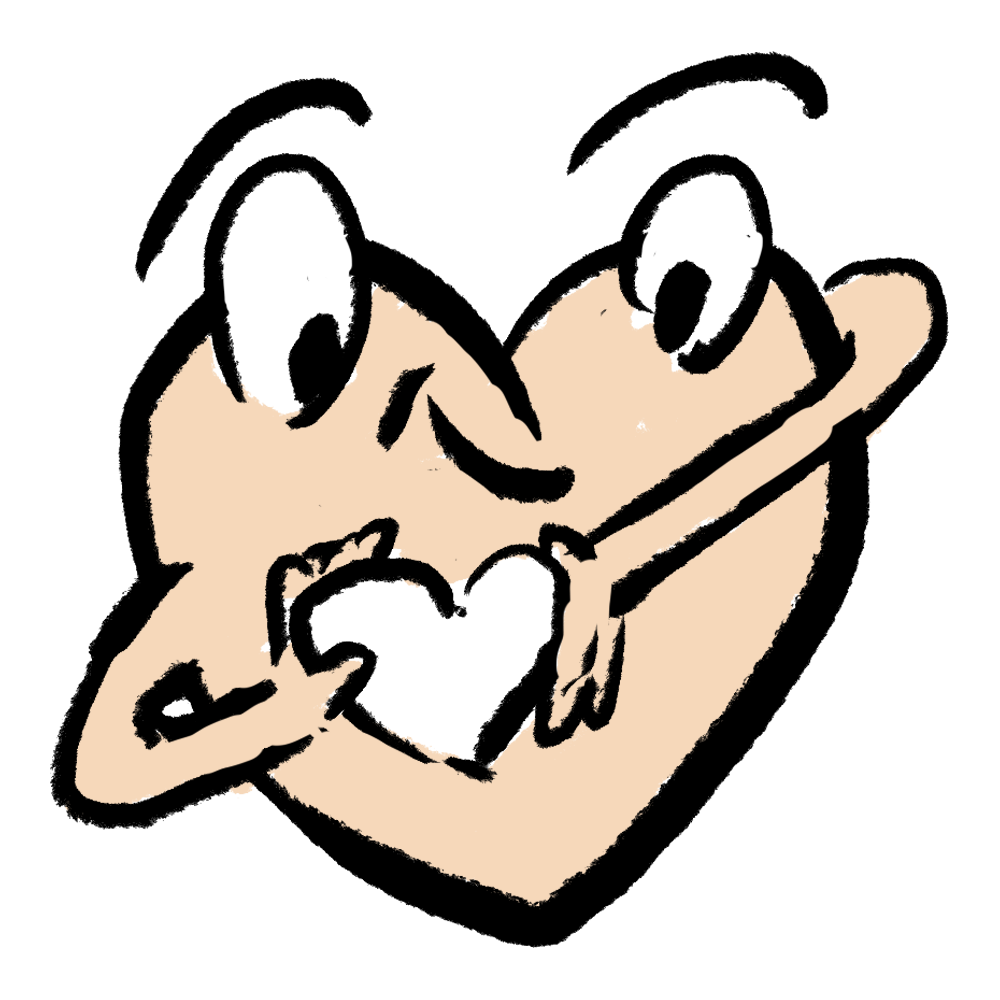
Value
- Appreciate the local knowledge and skills of market vendors.
- Appreciate the value of taking care of one’s health and well-being.
- Produce and distribute zines about working ergonomically to market vendors.
- Verbally and visually suggest improvements to specific vendors.
- Share their findings and recommendations with the public at the showcase.
Suggested Activities:
- Create informational materials and organise awareness campaigns to promote positive changes to market vendors’ working environment.
- Work with local council or market management authorities to implement changes based on the findings of the programme. This may include infrastructure improvements, safety measures, or policies enhancing vendors’ well-being.
Context and Citizenship
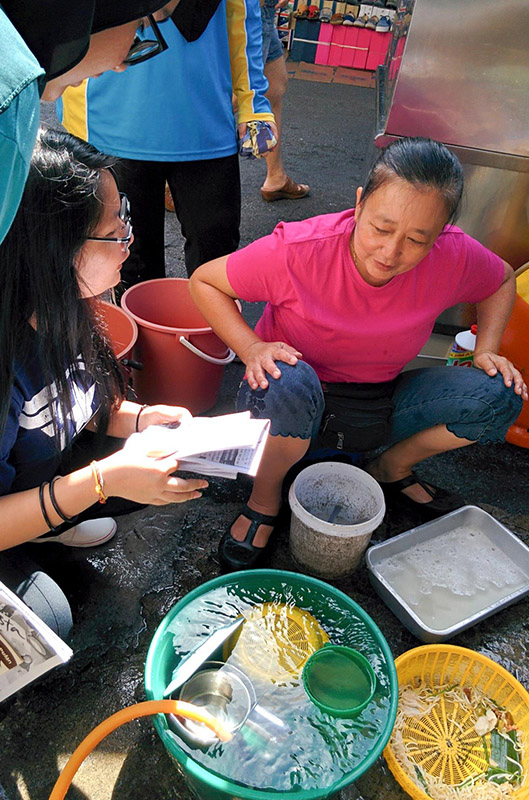
Local wet markets are home to diverse vendors with local knowledge and skills passed down through generations. However, working at the market can be physically demanding and affect vendors’ well-being and health. For example, standing for long hours can cause back pain, leg cramps, and fatigue, and lifting heavy objects can lead to musculoskeletal injuries. Ergonomics, the study of how people interact with their environment, can be used to design a market environment that maximises productivity and minimises the risk of injury or illness.
Exploring how market vendors utilise their local expertise, customs, and routines to modify or interact with their workspace and tools can help identify areas that need improvement for their well-being and safety. By applying ergonomics principles to the design of the market, vendors can enjoy reduced risk of injury and increased productivity, ultimately benefiting both the vendors and the local community.
Components of Learning
Activity 1 - Market Scavenger Hunt
To familiarise participants with the market and the vendors, participants hunted in groups for 14 specific people/items/places and marked them on a market map given. Participants also sketched what they observed through their five senses and jotted down observations on a worksheet.
Activity 2 - Introduction to Ergonomics
Facilitator introduced the definition of ergonomics as making choices that affect how we work safely, comfortably, and efficiently using our bodies. Emphasising that what is ergonomic is different for each individual, the facilitator encouraged participants to reflect on their daily poses and what made them feel comfortable or awkward. Participants then looked around and brainstormed suggestions to make the workshop space more ergonomic.
Activity 3 - Initial Observation of Market Vendor Practices, Tools, and Spaces
To practise gathering data and familiarise with the site and topic, participants were given a worksheet to observe and document vendors’ tools, practices, and spaces. They also sketched at least one of their observations on-site.
Activity 4 - Interview Training and Observational Drawing
In preparation for conducting interviews with vendors, participants drafted questions and practised taking on the role of interviewers and note-takers in role-play sessions. Participants also practised drawing from reference images using Loomis stick figure frames and using relative measurements to check proportions.
Activity 5 - Data Collection through Interview, Photo-taking, and Tool Testing
In small groups, participants chose a focus area based on their interests and strengths in either drawing, speaking, or language.
- Chopping and Cutting
- Sitting, Standing, Squatting
- Moving Heavy Objects
- Space and Architecture
For their chosen focus area, participants were tasked with producing an illustration collage of a key vendor and comparisons with other vendors within the chosen focus area. Participants interviewed the relevant vendors at the market to gather information on:
- Vendor profile,
- General daily work practices, and
- Vendor practices within the focus area.
Participants returned to the market multiple times to conduct in-depth interviews with multiple vendors and take reference photographs. They compared the different vendors’ practices and how they approached issues faced. Meanwhile, some groups tested the vendors’ tools for hands-on experience, while others sketched.
Activity 6 - Data Processing and Analysis
Participants processed the data they gathered about the vendor in their assigned focus area, analysing their general daily work practices and challenges. One of the tools they used was creating accurate figure drawings of the vendors using reference photographs taken onsite. Participants then presented the sketches to the other participants. Based on the feedback, some groups had to collect further data by conducting follow-up interviews with market vendors, measuring stall dimensions, and sketching vendor postures.
By sharing their findings with the other groups, everyone could gain a broader understanding of the market and the vendors and to learn from each other’s experiences.
Activity 7 - Data Synthesis and Interpretation
Based on rounds of data collection, participants created detailed pencil drawings, drafted captions, then inked their drawings and assembled them on mats to exhibit at the showcase. Each group worked on presenting their focus area, including a detailed study of a vendor. They also started working on the zine featuring their illustrations and written work.
Activity 8 - Presentation of Focus Areas
Activity 9 - Reflection on Ergonomic Issues
Based on their personal experiences, participants discussed ergonomic issues at their respective classrooms or schools and suggested changes to make them more ergonomic. The facilitator then guided the participants in identifying areas where the market vendors may be experiencing discomfort or strain and developing solutions to improve their well-being.
Activity 10 - Sharing of Suggestions with Vendors and Public Showcase
Participants put the content into a zine format and gave it to market vendors they interviewed. The zine included documentation of the vendors’ current work practices and suggestions of ways to work more ergonomically.
Participants also presented their findings, processes, and suggestions to approximately 150 public members comprising market vendors, customers, and school teachers and students.
Check out the full “Chowrasta at Work” zine here: https://www.charisloke.com/chowrasta-at-work
How to Adapt

Community
You could start from your school! Consider facilitating participants to investigate the ergonomics in their classroom environment, or in the work spaces of the school staff like the gardeners, canteen staff, or security guards. How can they help improve the working environment of members of their school community?
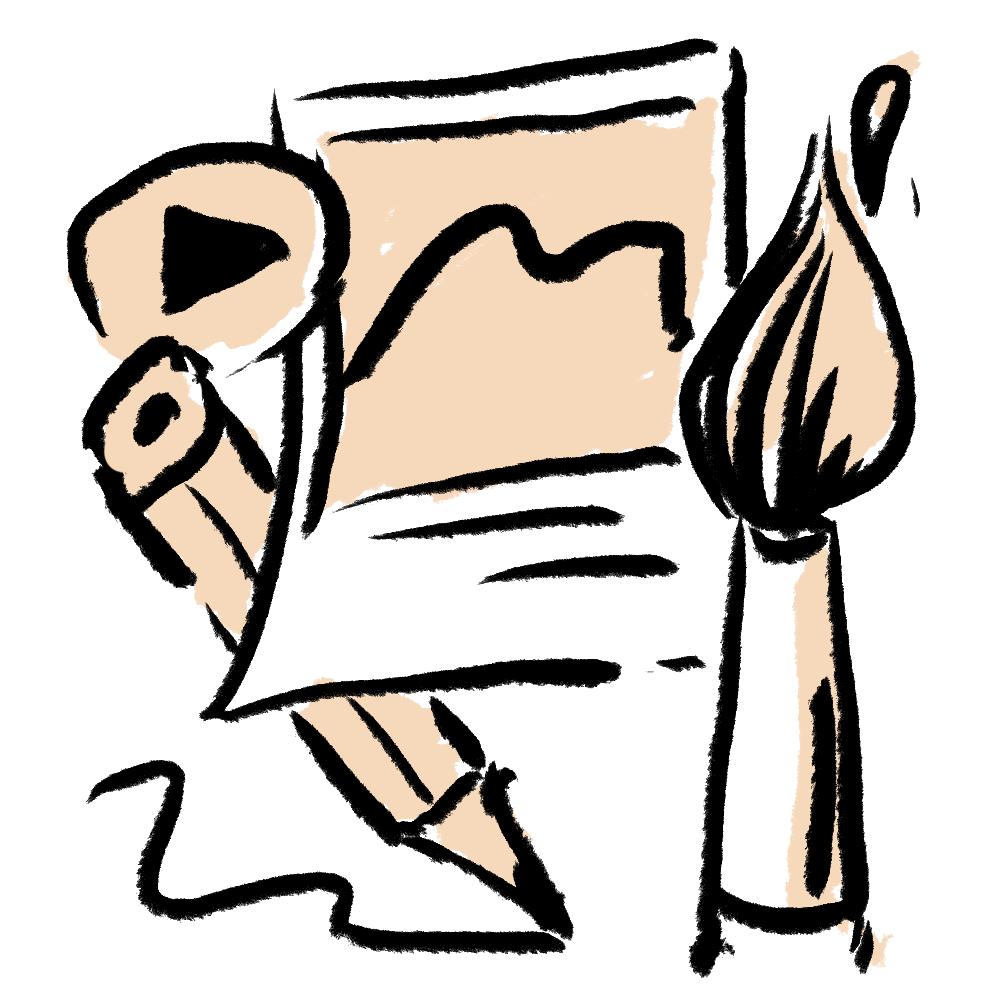
Creative Medium
Other than making collages and a zine with their illustrations, are there other suitable mediums for participants to investigate the topic and share their findings? You could explore using creative movements to allow participants to embody the vendors’ daily work motions, deepening their understanding of how the work space affects the vendors.

Topic
What are some ways to deepen the participants’ learning? Consider bringing in an ergonomics expert to share feedback on their recommendations for improving the vendors work space and work with the participants to materialise the recommendations.
Originally conducted by Charis Loke, Wan Atikah Wan Yusoff, and Luisa Wanlu Hung in Youth Arts Camp, Cultural Heritage Education Programme (CHEP).
Additional Resources
The “Chowrasta at Work” zine produced by participants of this project: https://www.charisloke.com/chowrasta-at-work
[Summary presented by Charis Loke, Workshop Artist and Programmer]
Overall, we are confident that our programme had a positive impact on our participants’ knowledge and appreciation of the cultural site, as well as their art and soft skills like communication and teamwork. However, we also recognize that there are areas for improvement based on the challenges faced during the programme.
One issue we noticed was that some participants felt stressed and pressured to create high-quality work for the showcase. To address this, we plan to emphasize the importance of enjoying the art-making process and placing less emphasis on the final product.
Additionally, we recognized that our programme did not have a clear long-term impact on the vendors at the market since implementing changes was not part of our scope. We plan to challenge participants to conduct further research and follow up on market ergonomics to see how they can make a lasting impact.
To better scaffold the market visit activities at the beginning of the programme, we plan to provide more structured support for participants. This will help them better understand how to approach their observations and sketches.
Finally, for participants who struggle with observational drawing, we plan to provide a guide for independent practice prior to the workshop. This will help participants prepare for on-site sketching and improve the quality of their work.
